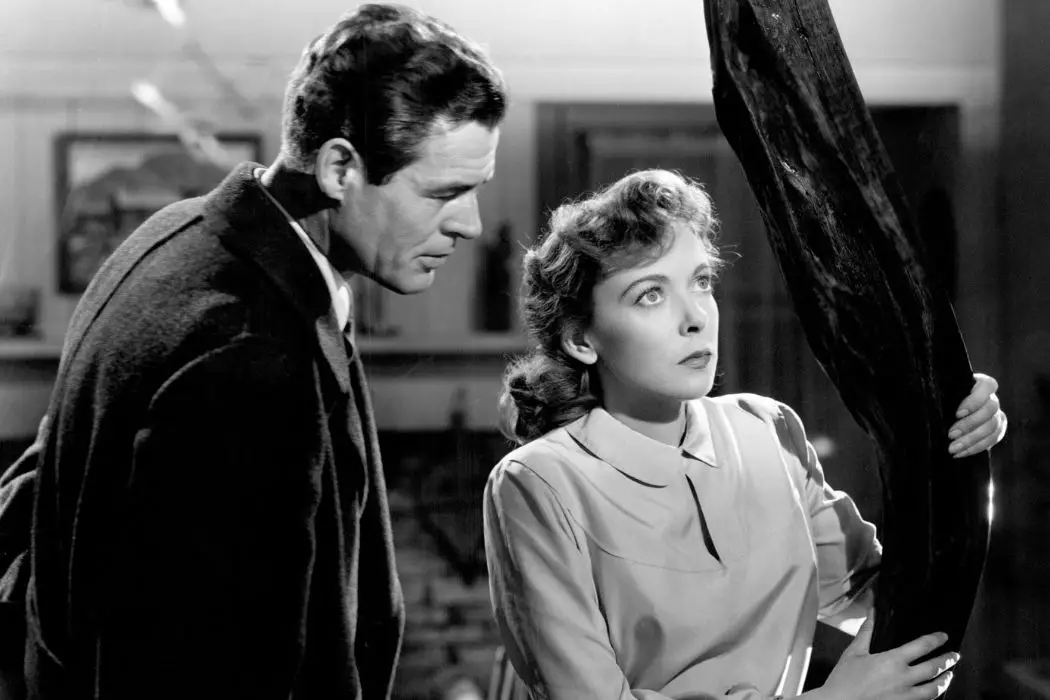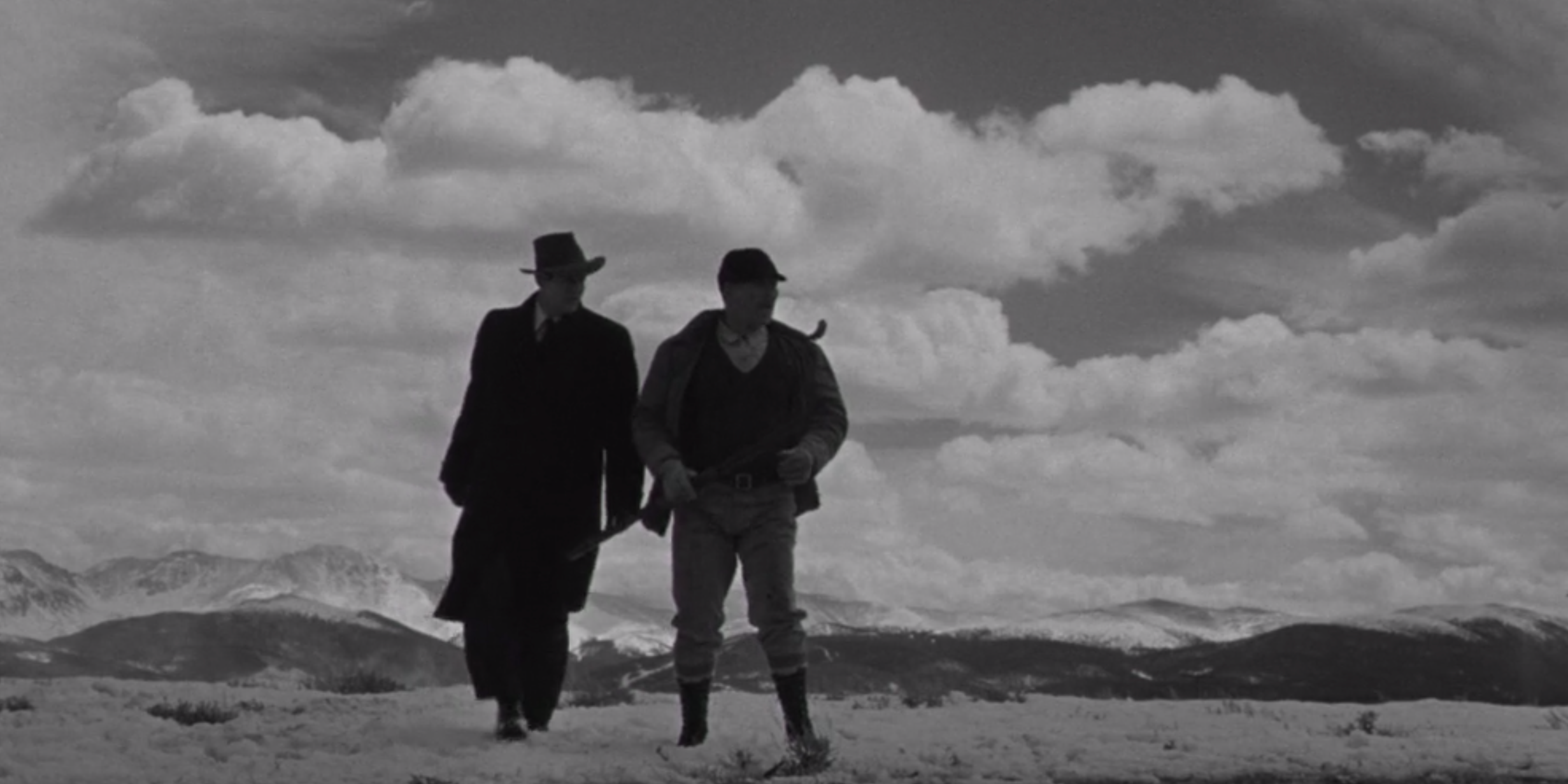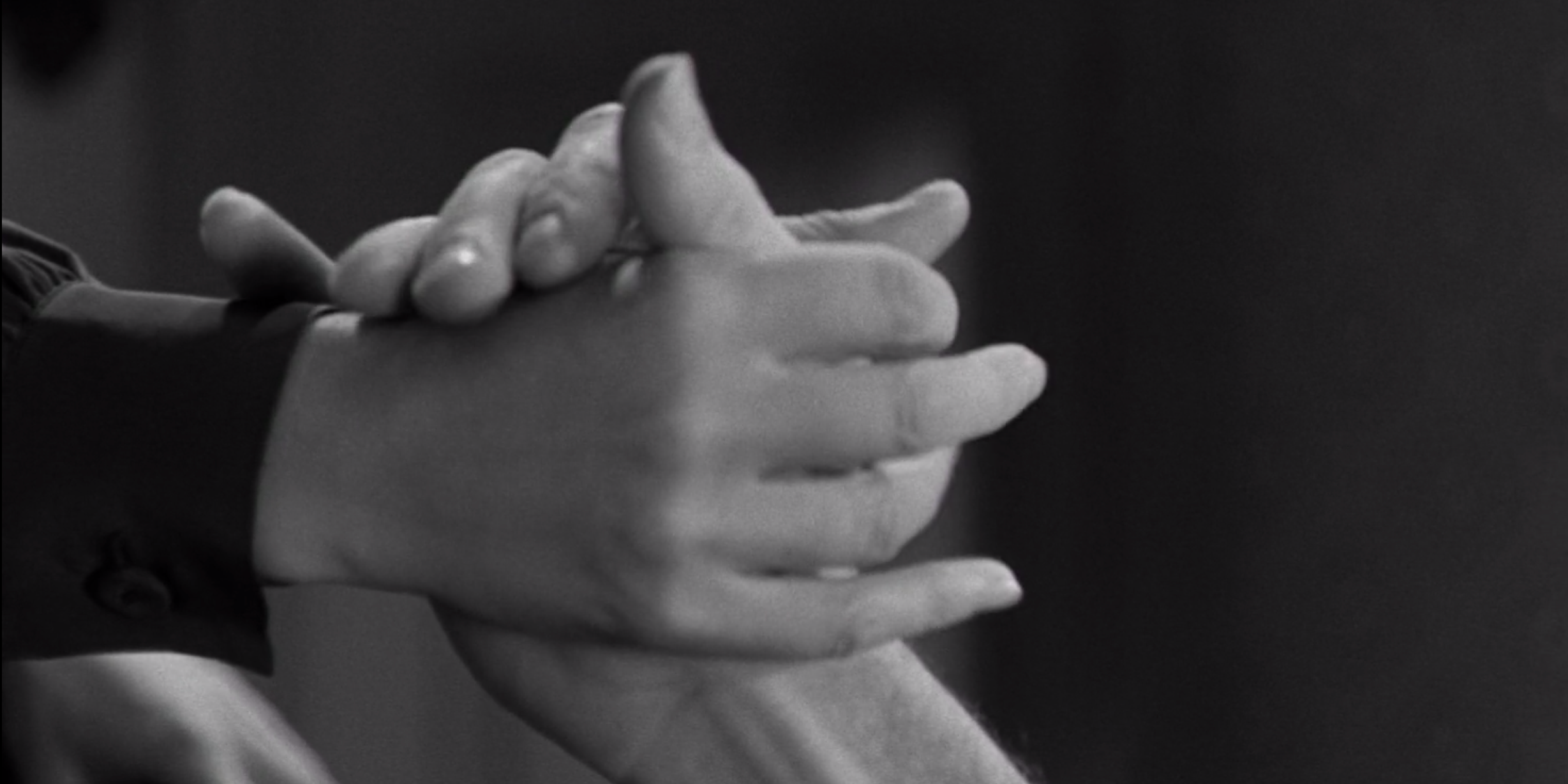ON DANGEROUS GROUND: A Non-Noir Existing On The Fringes

Alex Lei is a writer and filmmaker with a BA…
After less than five years in Hollywood, Nicholas Ray had gone from New York nobody to having six credited films under his belt. In a short period of time, he’d become a go-to filmmaker for low-budget genre pieces; noirs in particular, a genre often hard to pin down, in part because it was classified retroactively. But whatever rules may have been established were broken by Ray with his 1952 film On Dangerous Ground.
Not Quite Genre
With a run-of-the-mill opener, we meet Jim Wilson (Robert Ryan), a cynical city cop who has a violence burning inside of him. After an outburst where he beats a suspect, the chief reassigns him to a case upstate. The rain-soaked city streets are traded in for snowy mountains and an isolated town. He’s sent to find the murderer of a young girl, who’s father, Brent (Ward Bond), pushes his way into pursuit. After a long day’s trek, they come upon a cabin in the middle of a clearing and decide to take shelter.

The house is occupied not by a murderer, but a blind woman named Mary Malden (Ida Lupino), whose sincerity brings out the compassion at the heart of Jim and the mistrust plaguing Brent. When it’s revealed to Jim that the killer is Mary’s mentally challenged brother (Sumner Williams), he ends up sympathizing with the family and tries to devise a way he can get the boy to justice before Brent can find out and murder the boy himself.
It’s a film that defies not just genre expectation, but even the expectations it sets up for itself, culminating in a devastating ending where the only comfort left is the possibility of some human connection. Ray turns Robert Ryan, an actor known for his machismo, into a man who wants nothing but to leave that behind him. His performance is one of suppression—where the violence that is expected of him, and he knows he’s capable of, is burned away by Lupino. Her character’s impairment is intentionally left unsaid until we’ve gotten to know her a little, presenting a great confidence, but one existing solely as a mask for what others see her lacking. A great challenge for any actor.
This dynamic is brought out by the unapologetic bluster of Ward Bond, an actor who is most famous for his bit roles in John Ford‘s films, and arguably one of Ford‘s favorite punching bags. Bond is perfect for roles like Brent, so perfect he doesn’t even realize it. While in real life he was helping the House of Un-American Activities Committee name names, in On Dangerous Ground he’s hunting down a man in blind wrath and revenge. All of his greatest performances, like many of those found in Ray‘s films, are caricatures of what the actor’s persona represented.
Behind the Camera
On Dangerous Ground fits nicely into Ray‘s oeuvre. Like In a Lonely Place (1951), a lonely and violent man is given a chance to show his empathy through the help of a woman. Like They Live by Night (1949) or Johnny Guitar (1954), the film opens with all the tropes of a genre but then quickly reveals itself to be something else entirely, some kind of deeply human melodrama. And like Rebel Without a Cause (1955), most notably, the film is about a group of people who are not only misunderstood by those around them, but are refused so violently by society that it often keeps them from ever being able to go home again.

But the film is not something that belongs to Ray alone. When he became ill, Lupino took up the mantel and directed significant portions of the film. A Hollywood renegade in her own right, Lupino started directing not long after Ray. As an actor, she found herself bored in-between takes while “someone else seemed to be doing all the interesting work.” By 1950, Lupino and her husband opened an independent production company to produce low-budget, issue-oriented films, tackling Hollywood taboos like rape (Outrage, 1950) and bigamy (The Bigamist 1953).
Conclusion: On Dangerous Ground
Like the characters they lovingly highlighted in their films, Ray and Lupino existed on the fringes. They existed in some ways just at the right moment, the twilight of the studio system, which allowed them to operate with its industrious resources for relatively low budgets and little oversight. But then again, they were perhaps too early to the game—if they had come-of-age in the 60s they may have been some of the pioneers of New American Cinema, operating with complete artistic unrestraint. Of course, being born too young is another way to say “ahead of their time,” and their inspiration on the French New Wave and all those who came after cannot be understated.
What are some of your favorite genre-defying films? Leave a comment below and let us know.
On Dangerous Ground is currently streaming on Criterion Channel.
Does content like this matter to you?
Become a Member and support film journalism. Unlock access to all of Film Inquiry`s great articles. Join a community of like-minded readers who are passionate about cinema - get access to our private members Network, give back to independent filmmakers, and more.
Alex Lei is a writer and filmmaker with a BA in Film with a minor in Philosophy from Montana State University, focusing his thesis on post-Stalinist Soviet filmmaking. Currently based in Baltimore, MD, he's a fan of Russia, cowboys, and sometimes Russian cowboys.













